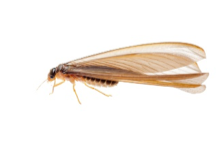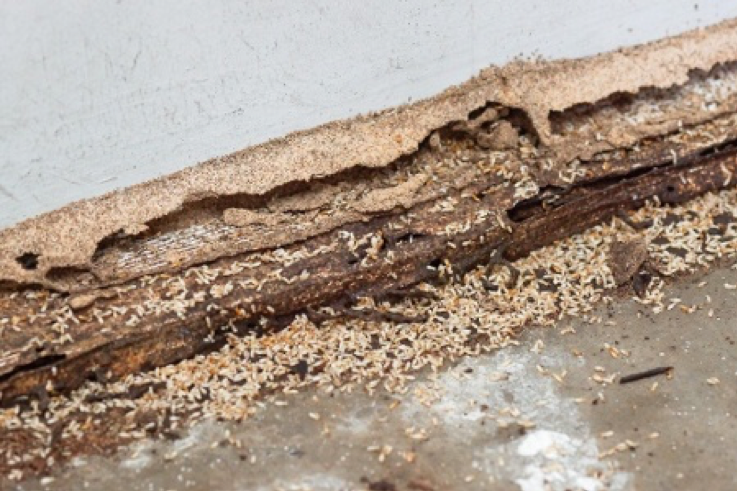 Termites fulfill an important role in our ecological system by speeding up the natural process of deterioration and help turn the dead wood into new soil. Unfortunately, termites don’t know the difference between a stump in your yard and the wood in your home. Termites live in social colonies, typically found in the soil. While they are generally found foraging underground for fallen wood, or plant debris, they can also enter homes causing extensive damage if left untreated.
Termites fulfill an important role in our ecological system by speeding up the natural process of deterioration and help turn the dead wood into new soil. Unfortunately, termites don’t know the difference between a stump in your yard and the wood in your home. Termites live in social colonies, typically found in the soil. While they are generally found foraging underground for fallen wood, or plant debris, they can also enter homes causing extensive damage if left untreated.
How can you tell if you have termites?
Subterranean termites are common structure infesting pests that originate in the soil. They are often detected by reproductive “swarming” behavior that can take place throughout the year, differentiated by the type of termite. Swarmers will be a dark brown to black color. When indoors, they tend to fly to light, so you may find them, or just their small tear-drop shaped wings near windows or light sources. Worker termites are a creamy white color and are rarely seen due to their sensitivity to light and air flow.
You may see characteristic “mud tubes” that the termites construct to protect themselves from the elements. Termite colonies can cause a great deal of damage to wooden structures because they rely on wood as their primary food source. Termite-damaged wood has no sawdust associated with it, so if you are seeing piles of sawdust, chances are the problem is related to carpenter ants.

Common areas for termite damage and activity include:
- Under wood flooring
- Ceilings
- Roof beams
- Under roof shingles
- Insulation
- And more!
Look for structural weaknesses which includes a “soft feeling” floor or ceiling and piles of wings on the ground.
Why do I have termites?
Termites are a common occurrence in nature, and are constantly in search of additional food sources. Worker termites travel underground looking for fallen trees, decaying wood, plant debris, and other cellulose materials to consume and bring back to the colony. It is not uncommon to find termites in mulch or a nearby wood pile around your home. Improper moisture control, leaf litter, and direct wood-to-soil contact are all prime conditions that can promote termite activity on your property – often times within close proximity to your home. While foraging, worker termites will enter cracks in the foundation of your home, ultimately leading them to the wood within the structure.
Are termites dangerous?
Termites thrive in dark, moist conditions and feed primarily on wood or other cellulose material. Termite workers constantly forage for new food sources both in ground and above ground. They are known to enter buildings through cracks in concrete flooring and foundation walls. When left undetected, termites can cause significant damage to your structure. Billions of dollars in damage are caused each year at the hands of termite activity.
In regards to human interactions, most termites will not bite unless directly handled. The chances that you will be bitten by a termite are extremely low.
How can I protect my home from termites?
Remove as much moisture from the crawl space and basement of your home as possible. This means repairing leaky pipes and faucets, addressing water damage, and using a dehumidifier. Trim back plants that come into contact with your home. Move wood piles far away from your home. When living outdoors, termites gravitate towards wood piles among other wood such as fallen logs. Take a walk around the exterior of your home. Are there cracks or gaps in the foundation? Seal them up to prevent unwanted entry points.
Your best defense against termite infestations and damage is always professional termite pest control.
What Are Termites? Termite and Pest Control in Tallahassee FL
Serving Your Pest Needs for over 50 years in Tallahassee FL
